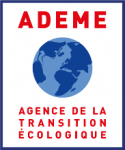Development of laminarin coated iron oxide nanoparticles for cancer therapy
| ABG-133948 | Master internship | 6 months | approximately 600 – 700 €/month |
| 2025-10-21 |
- Chemistry
- Biotechnology
Employer organisation
Website :
The LIENSs laboratory is a joint interdisciplinary research unit (UMR 7266) under the joint supervision of La Rochelle University and the CNRS.
LIENSs focuses its research on the functioning of the coastal zone, its evolution over time and particularly in the current context of global change and increasing urbanization of the coasts, and its sustainable use and exploitation.
Description
It is widely appreciated that nanomedicine is currently one of the cutting-edge strategies for biomedical applications. In oncology, an important part of its research is devoted to the development of multifunctional nanoparticles (NPs) for targeted drug delivery or else as imaging tools for both, advanced therapeutic and diagnostic applications. However, even if huge progress has been made in the field these last decades many obstacles remain to be addressed to improve their clinical value. One of the key aspects for the development of future medical NPs is the tailoring of their coatings, primarily essential to the colloidal stabilization of the NPs and governing partially their in vivo behaviour.
Polysaccharides (PS) are commonly used as stabilizing coatings in the NP architectures, valued for providing good colloidal stability, facilitating the conjugation of functional biomolecules (ligand, drug, linker), or enabling controlled release systems. PS have also gained interest as targeting ligands and even as the proper therapeutic agent within the nanotherapeutics platforms. However, their high molecular weight (MW), often combined with heterogeneous structures, results in NP with unsuitable pharmacokinetics (PK) properties, thereby limiting the applications, especially due to short blood circulation times and hepatic clearance (leading to toxicity issues from slow endogenous metabolization and hinder their therapeutic efficacy). Additionally, although PS exhibit promising bioactivities of interest, they often simultaneously display undesired biological effects that compromise their innocuousness and restrict their use in systemic administration. This reduces the advantages of the PS currently employed and, importantly, discards numerous PS families from the nanomedicine field, in particular the marine bioactive PS, despite their great potential in antitumor activity. Oligosaccharides (OS) are the low-MW derivatives of PS prepared by depolymerisation techniques and chemical post-modifications. OS have a better-defined molecular structures and biological properties, which may warrant a better control of the NPs in vivo behaviour. A key point is that OS can be released of the undesired biological properties of their PS parent while maintaining a specific bioactivity of interest. This could open the applications to the varieties of promising PS yet moved aside. Surprisingly understudied, we believe that these innovative bioactive OS coatings could answer the major considerations currently recommended for successful clinical development of NP against cancer.
In this background, the BCBS team at the LIENSs laboratory is working on innovative coatings based on bioactive marine-derived OS combined with a new generation of iron oxide nanoparticles (ESIONPs) for the development of targeted therapies and personalized medicine approaches against cancer. In particular, the team works with OS scaffolds derived from heparin, lambda-carrageenan and ulvan to develop OS-coated ESIONPS. Results obtained confirmed that these OS can fulfil the primary role of stabilizing coating/scaffold (like their PS parents) with improved innocuousness and biocompatibility and, above all, that they can confer innovative performance to the NPs. These include optimized PK properties (prolonged circulation time, fast clearance after exerting the effect), targeting abilities leading to preferential tumoral accumulation of the NPs, and, more importantly original antitumor therapeutic effects.
In this M2-internship project, the objective is to study the potential of a new marine PS/OS, laminaran (LAM) from brown algae, as coatings for ESIONPs.
In details, the M2-student will:
- Perform a depolymerisation method for the preparation of LAM OS from native PS starting material and achieve their basic characterization (Size, sulfation degree, etc);
- Synthesize, optimize and characterize LAM OScoated ESIONP using routes already developed in our laboratory;
- Evaluate several in vitro antitumoral bioactivities. Depending on the progress of the project, the student may also conduct preliminary cellbased experiments to confirm the therapeutic potential of the new NPs
Previous articles from the team:
- Synthesis and Characterization of λ-Carrageenan Oligosaccharide-Based Nanoparticles: Applications in MRI and In Vivo Biodistribution Studies. M. Porta-Zapata, S. Carregal-Romero, J. Saliba, A. Urkola-Arsuaga, C. Beatriz Miranda Perez de Alejo, I. Orue, L. Martínez-Parra, D. Di Silvio, A. Descamps-Mandine, C. Daviaud, M. Menard, A. Hamami, B. Musnier, J. Cherfan, A. Codault, C. Manseur, M. Jeannin, D. Castejón, I. Fruitier-Arnaudin, J. Ruiz-Cabello, H. Groult, Biomacromolecules, 2025, doi : 10.1021/acs.biomac.4c01747
- Heparin length in the coating of extremely small iron oxide nanoparticles regulates in vivo theranostic applications H. Groult, S. Carregal Romero, D. Castejon Ferrer, M. Azkargorta, K. Reddy Pulagam, A-B Miguel Coello, K.R. Pulagam, V. Gomez-vallejo, R. Cousin,M. Caffarel,C. H. Lawrie, J. Llop, J-M. Piot, F. Elortza,, T. Maugard, J. Ruiz-Cabello and I. Fruitier-Arnaudin, Nanoscale, 2021, 13(2):842-861
- Family of bioactive heparins-coated iron oxide nanoparticles with positive contrast in magnetic resonance imaging for specific biomedical applications. H. Groult, N. Poupard, F. Herranz, E. Conforto, N. Bridiau, S. Bordenave, J-M. Piot, J. Ruiz-Cabello, I. Fruitier-Arnaudin and T. Maugard, Biomacromolecules, 2017, 18(10):3156-316.
Profile
• Ability to follow chemical and analytical experimental protocols and ability in data curation
• Interest in nanotechnology and pharmaceutical formulation
• Interest in carbohydrate biochemistry and the oncology field/thematic
Starting date
Vous avez déjà un compte ?
Nouvel utilisateur ?
Get ABG’s monthly newsletters including news, job offers, grants & fellowships and a selection of relevant events…
Discover our members
 ONERA - The French Aerospace Lab
ONERA - The French Aerospace Lab  Tecknowmetrix
Tecknowmetrix  TotalEnergies
TotalEnergies  MabDesign
MabDesign  Institut Sup'biotech de Paris
Institut Sup'biotech de Paris  Laboratoire National de Métrologie et d'Essais - LNE
Laboratoire National de Métrologie et d'Essais - LNE  Ifremer
Ifremer  Groupe AFNOR - Association française de normalisation
Groupe AFNOR - Association française de normalisation  ADEME
ADEME  PhDOOC
PhDOOC  MabDesign
MabDesign  Nokia Bell Labs France
Nokia Bell Labs France  ASNR - Autorité de sûreté nucléaire et de radioprotection - Siège
ASNR - Autorité de sûreté nucléaire et de radioprotection - Siège  Généthon
Généthon  SUEZ
SUEZ  Aérocentre, Pôle d'excellence régional
Aérocentre, Pôle d'excellence régional  ANRT
ANRT  CASDEN
CASDEN  CESI
CESI
